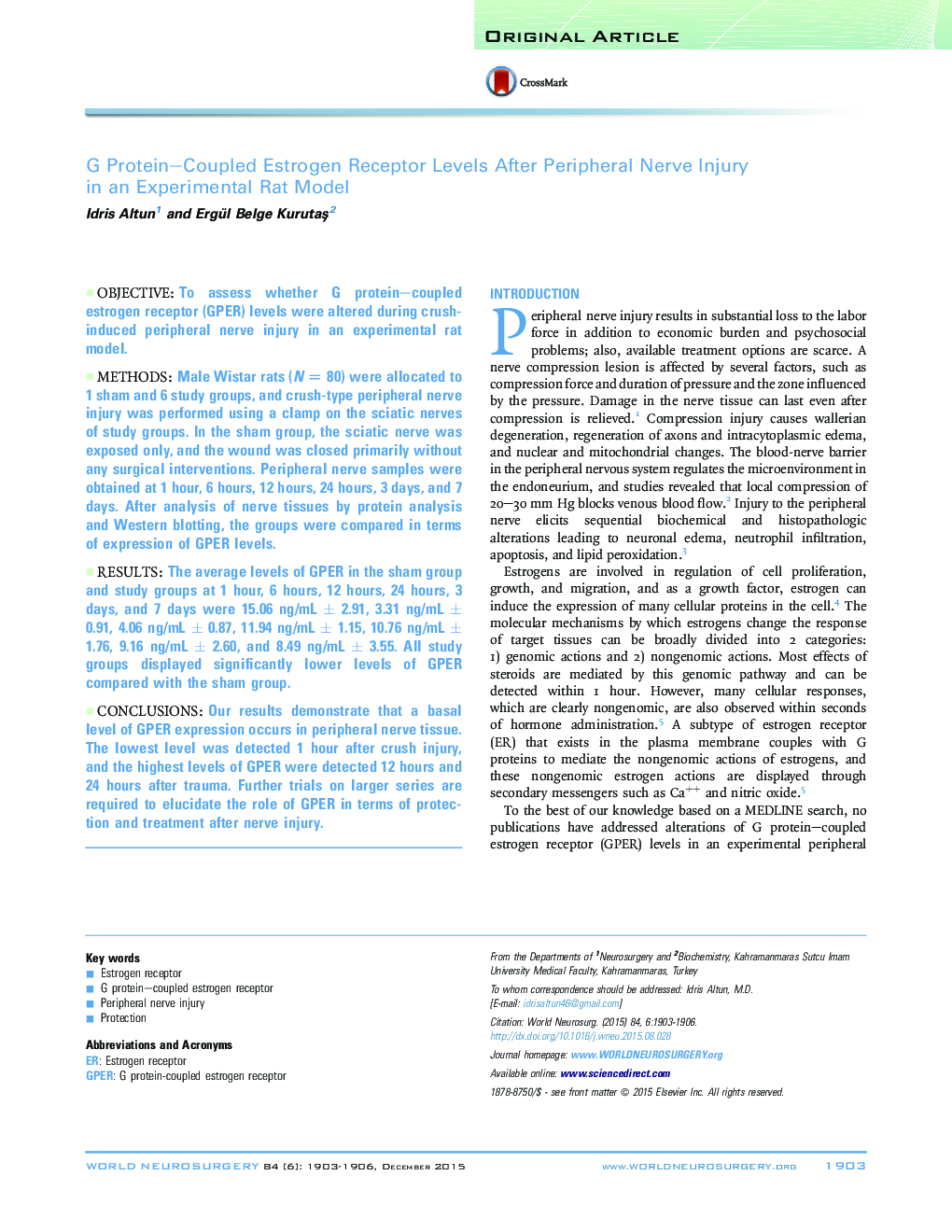| Article ID | Journal | Published Year | Pages | File Type |
|---|---|---|---|---|
| 6044548 | World Neurosurgery | 2015 | 4 Pages |
ObjectiveTo assess whether G protein-coupled estrogen receptor (GPER) levels were altered during crush-induced peripheral nerve injury in an experimental rat model.MethodsMale Wistar rats (N = 80) were allocated to 1 sham and 6 study groups, and crush-type peripheral nerve injury was performed using a clamp on the sciatic nerves of study groups. In the sham group, the sciatic nerve was exposed only, and the wound was closed primarily without any surgical interventions. Peripheral nerve samples were obtained at 1 hour, 6 hours, 12 hours, 24 hours, 3 days, and 7 days. After analysis of nerve tissues by protein analysis and Western blotting, the groups were compared in terms of expression of GPER levels.ResultsThe average levels of GPER in the sham group and study groups at 1 hour, 6 hours, 12 hours, 24 hours, 3 days, and 7 days were 15.06 ng/mL ± 2.91, 3.31 ng/mL ± 0.91, 4.06 ng/mL ± 0.87, 11.94 ng/mL ± 1.15, 10.76 ng/mL ± 1.76, 9.16 ng/mL ± 2.60, and 8.49 ng/mL ± 3.55. All study groups displayed significantly lower levels of GPER compared with the sham group.ConclusionsOur results demonstrate that a basal level of GPER expression occurs in peripheral nerve tissue. The lowest level was detected 1 hour after crush injury, and the highest levels of GPER were detected 12 hours and 24 hours after trauma. Further trials on larger series are required to elucidate the role of GPER in terms of protection and treatment after nerve injury.
